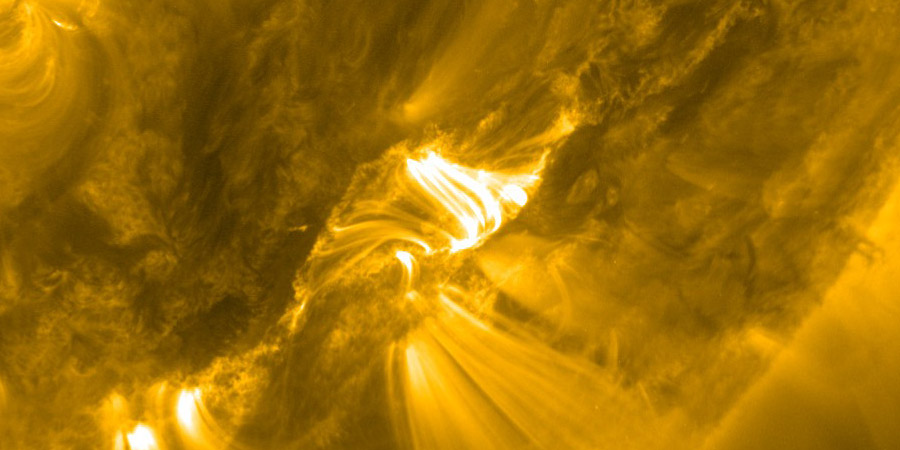C1 solar flare, earth-directed CME
Tuesday, 28 September 2021 14:10 UTC

A Type II radio emission was observed today at 06:20 UTC. It came from an amazing looking eruption around sunspot region 2871. While the eruption only peaked at C1.6, it was a long duration event which disturbed a large part of the corona.
Today's Type II radio emission came from an amazing eruption around sunspot region 2871. While the eruption only peaked at C1.6, it was a long duration event which disturbed a large part of the corona. A partially earth-directed eruption might have been launched. More info later. pic.twitter.com/cy9PLwFrJX
— SpaceWeatherLive (@_SpaceWeather_) September 28, 2021
In the video above you can see this disturbance really well. This and the Type II sweep suggested that this eruption likely launched a coronal mass ejection into space. Based on the location of sunspot region 2871 it seemed like an earth-directed component might be unlikely but considering the broad extend of the coronal wave we were slightly optimistic in the hours following the eruption that we might just see a glancing blow.
Now that we have all the coronagraph imagery from SOHO that we need, we can come to the conclusion that we weren't wrong to be optimistic. SOHO/LASCO C2 shows us a partial halo coronal mass ejection (see the tweet below) which extends over 180 degrees. This gives us confidence that this plasma cloud could indeed arrive at our planet as a a glancing blow late (after 12 UTC) on Friday, 1 October. The plasma cloud isn't faint on LASCO and that is a great sign but it is hard to estimate how strong this impact is going to be due to... hate using this term but... it is going to be a glancing blow. Under the right conditions we do think that we could see up to minor G1 geomagnetic storm conditions late on Friday or even on Saturday which equals a Kp-value of 5. The NOAA SWPC has yet to publish their official forecast but we will inform you about their forecast on our social media channels so please do follow us on Facebook and Twitter!
Here is the CME produced by this morning's C1 solar flare. A partial halo CME expanding over 180 degrees can be seen and this gives us confidence that this plasma cloud could arrive as a glancing blow late on Friday, 1 October.
— SpaceWeatherLive (@_SpaceWeather_) September 28, 2021
Follow it live on https://t.co/XHATH0OOfT pic.twitter.com/E7aDvAUYgw
Thank you for reading this article! Did you have any trouble with the technical terms used in this article? Our help section is the place to be where you can find in-depth articles, a FAQ and a list with common abbreviations. Still puzzled? Just post on our forum where we will help you the best we can!
Latest news
Latest forum messages
Support SpaceWeatherLive.com!
A lot of people come to SpaceWeatherLive to follow the Sun's activity or if there is aurora to be seen, but with more traffic comes higher server costs. Consider a donation if you enjoy SpaceWeatherLive so we can keep the website online!

Space weather facts
| Last X-flare | 2025/01/04 | X1.85 |
| Last M-flare | 2025/01/22 | M1.3 |
| Last geomagnetic storm | 2025/01/04 | Kp5 (G1) |
| Spotless days | |
|---|---|
| Last spotless day | 2022/06/08 |
| Monthly mean Sunspot Number | |
|---|---|
| December 2024 | 154.5 +2 |
| January 2025 | 145.8 -8.7 |
| Last 30 days | 161.9 +43 |


